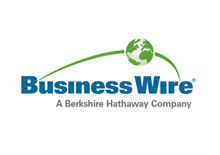$29.5 Billion Propylene Oxide Markets: Focus on Automotive, Building & Construction - Global Forecast to 2026 - ResearchAndMarkets.com
The "Propylene Oxide Market - Global Forecast to 2026" report has been added to ResearchAndMarkets.com's offering.
The propylene oxide market is projected to grow from USD 22.5 billion in 2021 to USD 29.5 billion by 2026, at a CAGR of 5.6% from 2021 to 2026.
The increasing demand for polyether polyols for the production of polyurethane is expected to increase the demand for propylene oxide over the next few years.
Increase in demand for polyurethane from the healthcare industry is expected to open new revenue pockets for the propylene oxide market. However, the impact of COVID-19 on the automotive and construction industries may restrain the market growth.
"Polyether polyols application segment is projected to lead the propylene oxide market during the forecast period."
Based on application, the polyether polyols segment is estimated to grow at the highest CAGR during the forecasted period. Polyether polyols are manufactured by the catalyzed addition of epoxides to propylene oxide or ethylene oxide. They are mainly used in the manufacturing of polyurethanes (flexible foams).
Polyether polyols are a class of organic chemicals that contain multiple ether linkages and have multiple hydroxyl groups. The majority of polyether polyols are used in the manufacturing of urethanes and other products, such as surface-active agents, functional fluids, and synthetic lubricants.
"Building & Construction is the second-largest end-use industry segment propylene oxide market."
Based on the end-use industry, the building & construction segment accounted for the second-largest share in the propylene oxide market. Building & construction industry is one of the major end-use industries of propylene oxide. In this end-use industry, fiber-reinforced plastics (FRPs) are used primarily for manufacturing building panels, bathroom components, fixtures, corrosion-resistant tanks, and pipes and ducts. These FRPs are produced by reinforcing nearly three-quarters of unsaturated polyester resins (UPR) with fiberglass or mineral fillers. UPR are made from monopropylene glycol (MPG), which is obtained from propylene glycol.
"Asia Pacific is projected to grow the highest CAGR in the propylene oxide market during the forecast period."
Asia Pacific is projected to grow at the highest CAGR in the propylene oxide market from 2021 to 2026. Increasing demand for propylene oxide from the polyether polyols and propylene glycol application segments is a major factor driving the Asia Pacific propylene oxide market. China is projected to be the world's largest consumer of propylene oxide during the forecast period.
The country has witnessed capacity expansion projects by companies, such as Royal Dutch Shell plc (Netherlands) in recent times. This capacity expansion will enable the production of an additional 300 kilotons of propylene oxide and 600 kilotons of polyols in the country.
Furthermore, as a part of the qualitative analysis of the propylene oxide market, the research provides a comprehensive review of drivers, restraints, opportunities, and challenges influencing the growth of the market across the globe.
It also discusses competitive strategies adopted by the leading market players such as Dow Inc. (US), LyondellBasell Industries Holdings B.V. (Netherlands), Royal Dutch Shell PLC (Netherlands), BASF SE (Germany), SKC Company (South Korea), AGC Inc. (Japan), Repsol (Spain), Sumitomo Chemical Co., Ltd. (Japan), Tokuyama Corporation (Japan), Indorama Ventures Public Company (Thailand).
Premium Insights
- The Need for Polyurethane Foam in Multiple End-Use Industries Drives Growth of the Propylene Oxide Market
- Polyether Polyols Application to Grow the Fastest
- China Accounted for the Largest Share in the Market
- China and India to Offer Lucrative Growth Opportunities During the Forecast Period
Market Dynamics
Drivers
- Increasing Demand for Polyether Polyols for the Production of Polyurethane
- Demand for Propylene Oxide from End-Use Industries
Restraints
- Impact of COVID-19 on Automotive and Construction Industries
- Toxic Nature of Propylene Oxide
Opportunities
- Growing Opportunities in Developing Economies
- Emerging Applications in Healthcare Industry
Challenges
- Price Volatility of Raw Materials
- Use of Bio-Based Feedstock for Polyurethane Foam Instead of Petroleum
Regulatory Landscape
- Coast Guard, Department of Homeland Security
- Department of Transportation (Dot)
- Environmental Protection Agency (Epa)
- Clean Air Act
- Federal Insecticide, Fungicide, and Rodenticide Act
- Food and Drug Administration (Fda)
- Occupational Safety and Health Administration (Osha)
Technology Analysis
- Chlorohydrin Process (Chpo)
- Ethylbenzene Hydroperoxide with Styrene Co-Product (Posm)
- Cumene Hydroperoxide (Chp) Process
- Epoxidation with Hydrogen Peroxide (Hppo)
Companies Mentioned
- AGC Inc.
- Basf Se
- Befar Group
- Dow Inc.
- Indorama Ventures Public Company Ltd.
- Ineos Oxide
- Jishen Chemical Industry Co. Ltd. (Merged)
- Lyondellbasell Industries Holdings B.V.
- Manali Petrochemicals
- Merck Kgaa
- Oltchim S.A.
- PCC Rokita
- PJSC Nizhnekamskneftekhim
- Repsol
- Royal Dutch Shell plc
- S-Oil Corporation
- SKC Company Ltd
- Sumitomo Chemical Co. Ltd.
- Tianjin Dagu Chemical Co. Ltd.
- Tokuyama Corporation
- Tokyo Chemical Industry Co. Ltd.
- Wanhua Chemical Group Co. Ltd.
- Wudi Xinyue Chemical Co. Ltd.
For more information about this report visit https://www.researchandmarkets.com/r/j4bica
View source version on businesswire.com: https://www.businesswire.com/news/home/20210811005341/en/



